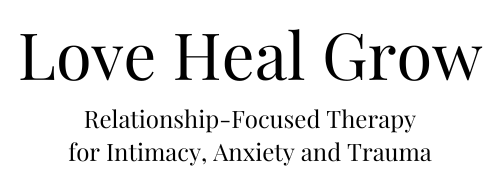
Have you ever heard the phrase “your inner child” and wondered what it really means? It might even seem a little silly to think about– that you, an adult, have to think about having your childhood self inside of you?
If that’s how you feel, your inner child might need a little healing! Today, we’re going to talk about what your inner child really is, and how the concept can help you think about your emotions, mental health, and overall well-being.
What Is An Inner Child?
The concept of the “inner child” comes from several different psychological and therapeutic frameworks. It represents the metaphorical and emotional aspect of one’s personality that retains the innocence, curiosity, and vulnerability of childhood. Basically, this idea suggests that within every adult exists an inner representation of their childhood self. That inner child carries memories, emotions, and experiences that continue to shape your present behaviors and perceptions.
Of course, the inner child is not a literal, tangible thing! Instead, think of it as a symbol of the emotions of your early life. The inner child encompasses both positive and negative aspects of childhood, including joy, wonder, playfulness, as well as any unresolved traumas, wounds, or unmet needs. This metaphor is a way for you to explore and understand the impact of your early experiences on your current emotional well-being and interpersonal relationships.
The Positives and Negatives of the Inner Child
Positive aspects of the inner child often involve qualities such as spontaneity, creativity, and a sense of wonder. These characteristics can inspire adults to approach life with a fresh perspective, fostering creativity and resilience. Nurturing the positive aspects of the inner child can contribute to emotional well-being and a more fulfilling life.
However, the inner child also encapsulates the wounds and traumas from childhood that may have been suppressed or unaddressed. These emotional scars can manifest in patterns of behavior, thought, and emotional responses in adulthood. Identifying and healing these wounded aspects helps foster self-compassion and emotional growth.
How To Know If Your Inner Child Needs Healing
Recognizing that your inner child needs healing is a crucial step towards personal growth and emotional well-being. There are many indications that suggest that aspects of your inner child could use some healing. It’s important to be attuned to your emotions, behaviors, and thought patterns to identify these signs. If you notice any of these signs, you might want to talk to a mental health practitioner.
Persistent Emotional Patterns
If you notice recurring emotional patterns that seem disproportionate to the current situation, it could be a sign that your inner child is influencing your reactions. For example, intense fear, anger, or sadness triggered by seemingly minor events may indicate unresolved childhood emotions.
Difficulty in Relationships
Challenges in forming and maintaining healthy relationships may stem from unresolved issues with the inner child. If you find yourself struggling with trust, intimacy, or communication, it may be worthwhile to explore whether these difficulties have roots in past experiences that impacted your sense of safety and connection.
Self-Sabotaging Behaviors
Engaging in self-destructive behaviors, such as substance abuse or excessive risk-taking, may indicate that your inner child is seeking relief from unaddressed pain. These behaviors can be coping mechanisms rooted in past traumas.
Perfectionism and Inner Critic
A harsh inner critic or a relentless need of perfection could mean that your wounded inner child needs external validation. Childhood experiences of conditional love or high expectations can contribute to the development of an overly critical inner voice.
Difficulty Expressing Emotions
If you find it challenging to express and communicate your emotions or struggle with emotional vulnerability, it may mean that your inner child learned to suppress feelings as a coping mechanism. Healing involves relearning how to navigate and express emotions in a healthy manner.
Low Self-Esteem and Self-Worth
Deep-seated feelings of inadequacy, low self-esteem, or a persistent sense of unworthiness often trace back to childhood experiences. Healing your inner child involves recognizing and challenging negative self-perceptions that come from your younger days.
Fear of Abandonment or Rejection
A strong fear of abandonment or rejection in relationships may mean you have some unresolved issues related to attachment, especially related to early caregiving experiences. Healing involves understanding and addressing these fears and can help you establish healthier relationship dynamics.
Lack of Playfulness and Joy
The absence of playfulness, creativity, and joy in life may indicate a neglected or wounded inner child. Rediscovering and nurturing these qualities can be essential for emotional healing, and they’ll make your life more fun, too!
Memories of Childhood Trauma
Painful memories of traumatic events from childhood, whether they involve abuse, neglect, or significant losses, can be clear indicators that your inner child needs healing. Seeking professional support is crucial in processing and overcoming such traumatic experiences.
Tips For Healing Your Inner Child
So now that you know that your inner child needs some help, what can you do about it? Here are some techniques you can use for emotional healing.
Reflect on Childhood Experiences
Begin by reflecting on your childhood experiences. You need to find patterns, memories, or significant events that might have shaped your emotional landscape. This self-reflection provides a starting point for understanding the roots of your current emotions and behaviors.
Recognize Unmet Needs
Acknowledge any unmet emotional needs from your early years. This might include a lack of validation, affection, or a sense of safety. Identifying these unmet needs is crucial in understanding the areas that require healing.
Practice Self-Compassion
Cultivate self-compassion by treating yourself with kindness and understanding. Acknowledge that your inner child may have experienced challenges, and respond to yourself with the same empathy you would offer to a friend in a similar situation.
Establish Healthy Boundaries
Develop and maintain healthy boundaries in your current relationships. This involves setting clear limits on what you find acceptable and asserting your needs. Healthy boundaries create a sense of safety and security, which contributes to inner child healing.
Engage in Mindfulness Practices
Incorporate mindfulness practices into your routine. Mindfulness involves staying present in the moment, observing thoughts and emotions without judgment. This can help you develop a deeper awareness of your reactions and break free from automatic patterns.
Connect with Supportive Relationships
Cultivate supportive relationships with friends, family, or partners. Sharing your journey with others who provide empathy and encouragement fosters a sense of validation and creates a supportive environment for healing.
Practice Reparenting
Engage in reparenting practices by meeting your own emotional and physical needs. Provide yourself with the care, understanding, and encouragement that may have been lacking in your early years. Reparenting is a powerful way to nurture your inner child.
Seeking Professional Help for Your Inner Child
If you want to help heal your inner child, consider seeking the support of a therapist or counselor. Professional guidance can offer valuable insights, coping strategies, and a safe space to explore and process emotions associated with your inner child. If that’s something you’re interested in, don’t hesitate to reach out to the therapy team at Love Heal Grow. We’re here for you!
























